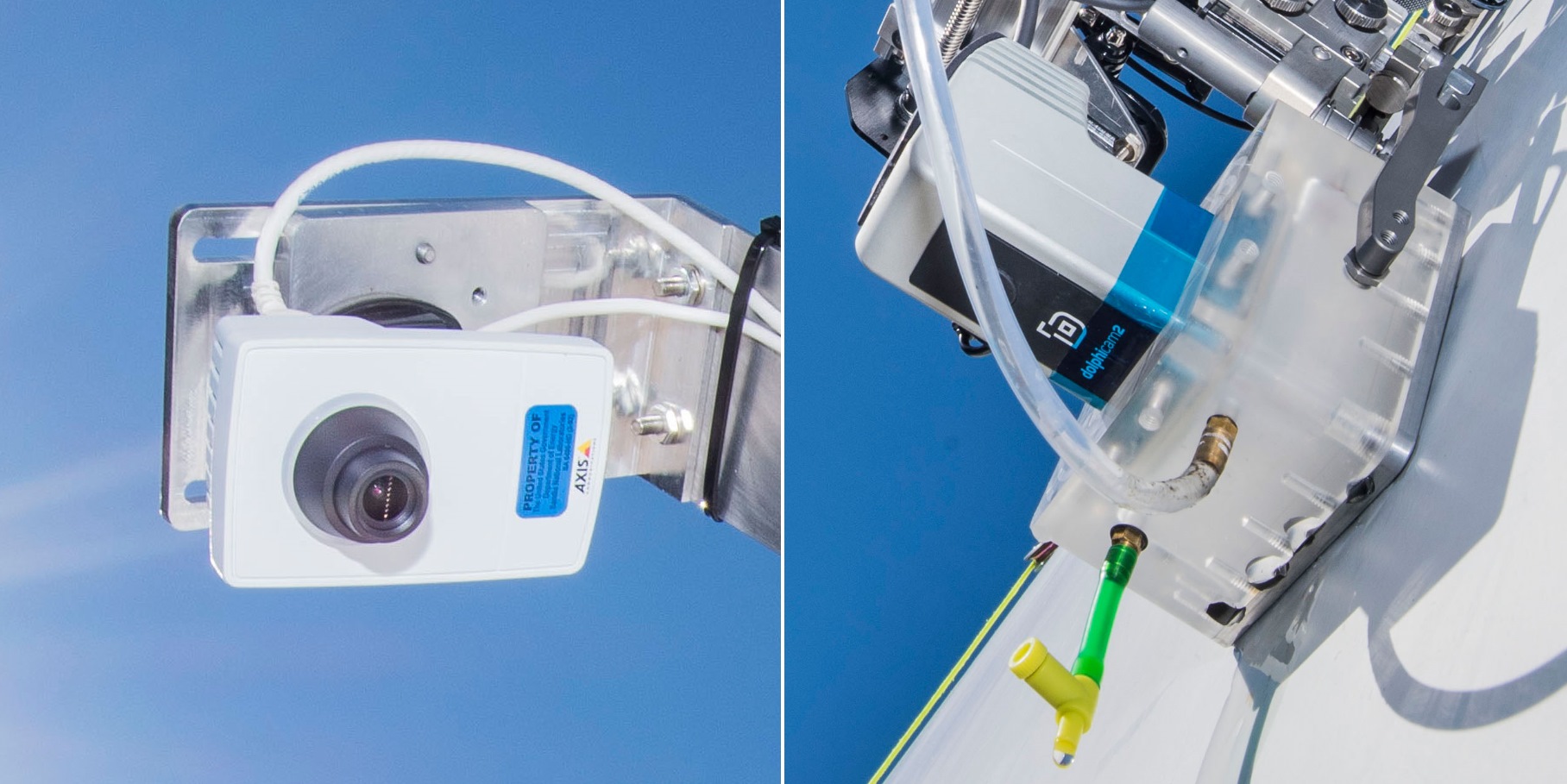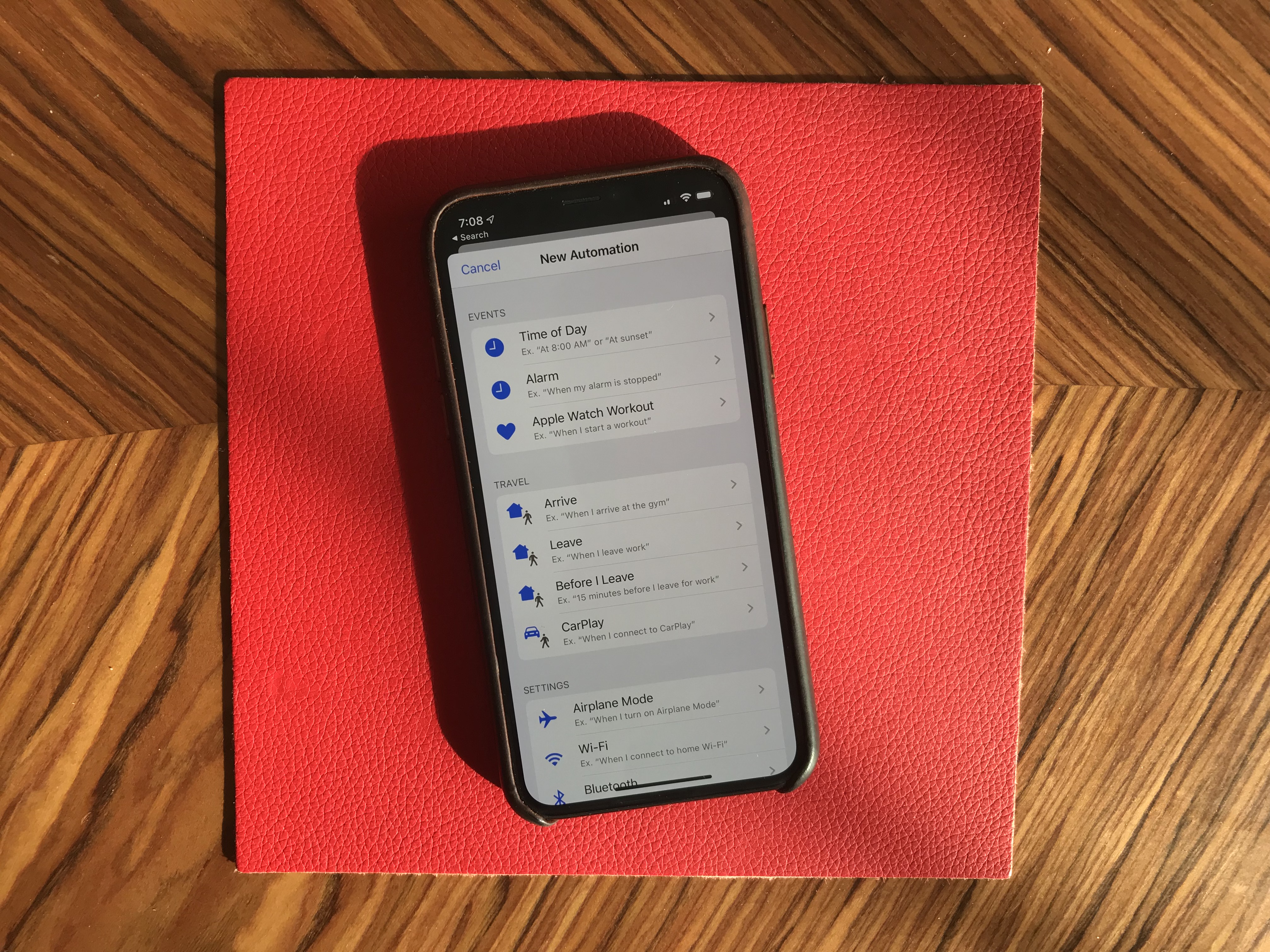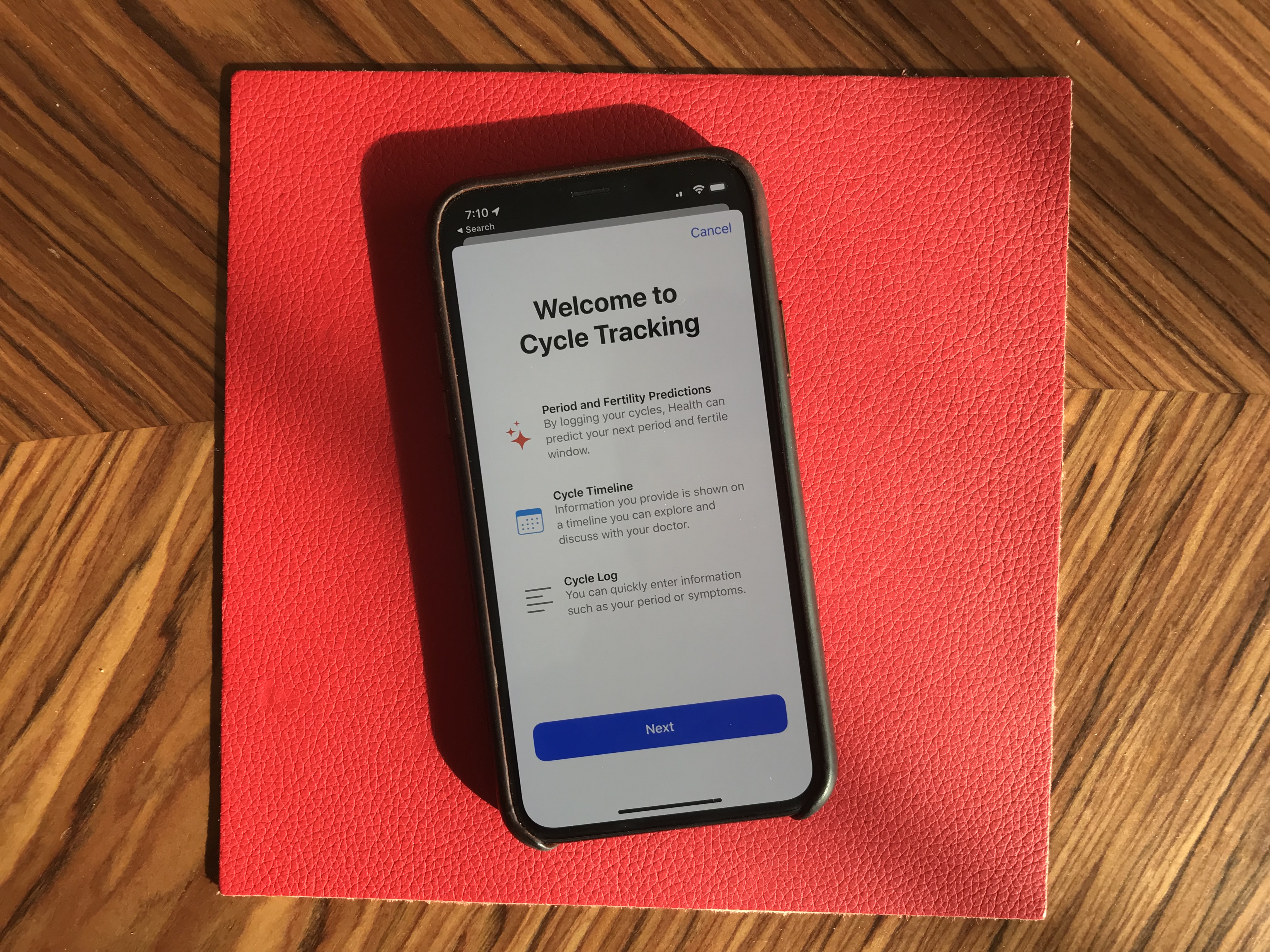Apple says Spotify exaggerated how much ‘App Store tax’ it pays
In March, Spotify filed a complaint against Apple with the European Commission over the so-called “Apple tax” and claims of restrictive rules regarding the App Store. In the time since, Apple has responded with the launch of a website that takes aim at the anti-trust, anti-competitive claims against it, and most recently, a deep dive into how the process of app approvals works, by way of a CNBC profile. Now, Apple has responded to the EC complaint with its own filing that says Spotify is only paying this “Apple tax” on less than 1 percent of its paid subscribers.
This news was first reported by Music Business Worldwide (MBW) and German site Der Spiegel.
Specifically, Apple’s filing says that Spotify only pays a 15% “app tax” (revenue share) on just 0.5% of its 100 million premium subscribers, or around 680,000 customers. This revenue share only impacts those customers Spotify acquired during the 2014-2016 time frame who signed up for the subscription through an in-app purchase. Afterward, Spotify switched off the option to sign up in the app.
This is in contrast to the claim made by Spotify CEO Daniel Ek on the company’s blog in March, where he wrote that “Apple requires that Spotify and other digital services pay a 30% tax on purchases made through Apple’s payment system.”
In addition, MBW reports, citing an unnamed source, that Spotify pays even less than the standard 15% for those customers who signed up through in-app purchase due to label discounts. The source told the outlet that Spotify just wants to “pay nothing.”
However, Spotify’s claim goes beyond the Apple tax.
It also said that Apple used its App Store power to penalize the competitor in other ways — like limiting Spotify’s ability to communicate with customers, or even send emails to its iOS users. Spotify said Apple also blocked its iOS upgrades — something it brought to light years ago. Apple, meanwhile, has always maintained it has treated Spotify like any other app developer.
Apple’s responses to these latter points were also sneaked into the recent CNBC piece where a “longtime Apple veteran” who was only identified as “Bill,” made certain to tell the news site that he had “called Spotify when an update was rejected” — e.g. because Spotify had been emailing customers and asking them to pay the music streamer directly outside the App Store.
In addition to Spotify’s EU complaint, Apple is facing other attacks against its App Store in the U.S. courts.
The U.S. Supreme Court in May ruled against Apple to allow an App Store antitrust case to proceed.
And in June, two app developers proceeded to sue Apple over its App Store practices, making similar claims about Apple’s 30% commission on app sales and its requirement to price apps in tiers ending in 99 cents.
Apple had earlier responded to Spotify’s complaint in length on its own website. The company, in part, said that:
After using the App Store for years to dramatically grow their business, Spotify seeks to keep all the benefits of the App Store ecosystem — including the substantial revenue that they draw from the App Store’s customers — without making any contributions to that marketplace. At the same time, they distribute the music you love while making ever-smaller contributions to the artists, musicians and songwriters who create it — even going so far as to take these creators to court.
…
Apple’s approach has always been to grow the pie. By creating new marketplaces, we can create more opportunities not just for our business, but for artists, creators, entrepreneurs and every “crazy one” with a big idea. That’s in our DNA, it’s the right model to grow the next big app ideas and, ultimately, it’s better for customers.
Powered by WPeMatico
This robot crawls along wind turbine blades looking for invisible flaws
Wind turbines are a great source of clean power, but their apparent simplicity — just a big thing that spins — belie complex systems that wear down like any other, and can fail with disastrous consequences. Sandia National Labs researchers have created a robot that can inspect the enormous blades of turbines autonomously, helping keep our green power infrastructure in good kit.
The enormous towers that collect energy from wind currents are often only in our view for a few minutes as we drive past. But they must stand for years through inclement weather, temperature extremes, and naturally — being the tallest things around — lightning strikes. Combine that with normal wear and tear and it’s clear these things need to be inspected regularly.
But such inspections can be both difficult and superficial. The blades themselves are among the largest single objects manufactured on the planet, and they’re often installed in distant or inaccessible areas, like the many you see offshore.
“A blade is subject to lightning, hail, rain, humidity and other forces while running through a billion load cycles during its lifetime, but you can’t just land it in a hanger for maintenance,” explained Sandia’s Joshua Paquette in a news release. In other words, not only do crews have to go to the turbines to inspect them, but they often have to do those inspections in place — on structures hundreds of feet tall and potentially in dangerous locations.
Using a crane is one option, but the blade can also be orientated downwards so an inspector can rappel along its length. Even then the inspection may be no more than eyeballing the surface.
“In these visual inspections, you only see surface damage. Often though, by the time you can see a crack on the outside of a blade, the damage is already quite severe,” said Paquette.
Obviously better and deeper inspections are needed, and that’s what the team decided to work on, with partners International Climbing Machines and Dophitech. The result is this crawling robot, which can move along a blade slowly but surely, documenting it both visually and using ultrasonic imaging.
 A visual inspection will see cracks or scuffs on the surface, but the ultrasonics penetrate deep into the blades, making them capable of detecting damage to interior layers well before it’s visible outside. And it can do it largely autonomously, moving a bit like a lawnmower: side to side, bottom to top.
A visual inspection will see cracks or scuffs on the surface, but the ultrasonics penetrate deep into the blades, making them capable of detecting damage to interior layers well before it’s visible outside. And it can do it largely autonomously, moving a bit like a lawnmower: side to side, bottom to top.
Of course at this point it does it quite slowly and requires human oversight, but that’s because it’s fresh out of the lab. In the near future teams could carry around a few of these things, attach one to each blade, and come back a few hours or days later to find problem areas marked for closer inspection or scanning. Perhaps a crawler robot could even live onboard the turbine and scurry out to check each blade on a regular basis.
Another approach the researchers took was drones — a natural enough solution, since the versatile fliers have been pressed into service for inspection of many other structures that are dangerous for humans to get around: bridges, monuments, and so on.
These drones would be equipped with high-resolution cameras and infrared sensors that detect the heat signatures in the blade. The idea is that as warmth from sunlight diffuses through the material of the blade, it will do so irregularly in spots where damage below the surface has changed its thermal properties.
As automation of these systems improves, the opportunities open up: A quick pass by a drone could let crews know whether any particular tower needs closer inspection, then trigger the live-aboard crawler to take a closer look. Meanwhile the humans are on their way, arriving to a better picture of what needs to be done, and no need to risk life and limb just to take a look.
Powered by WPeMatico
iOS 13 brings many much needed quality-of-life improvements
In developer lingo, quality-of-life updates are all about refining things that already work. Thanks to these incremental improvements, it should make the end-user experience much more enjoyable. And with iOS 13, it feels like Apple’s main focus is on this concept.
Dark Mode is basically the only new flashy feature of iOS this year. But that’s not a bad thing. From my experience, all the tiny refinements across the board are really convincing. iOS 13 is a much more interesting release than iOS 12 for instance.
I’ve been playing with early beta versions of iOS 13, so here’s what you should be looking for.
Dark Mode is gorgeous
Dark Mode is here, and it looks great. It’s a system-wide trigger that completely transforms the look and feel of your iPhone — you have to play with it to really feel the difference. The easiest way to activate it is by opening the Control Center panel, long pressing on the brightness indicator and turning it on.
While you can trigger it manually, you can also select an automated mode in the settings. Right now, my phone becomes dark at night and lights up in the morning. iOS uses your current location to time the change with the sunset and sunrise.

Widgets, notifications and menus now use black or transparent black as much as possible. You can choose new Apple wallpapers that change when you turn on Dark Mode, or you can optionally dim your custom wallpapers at night.
Apple has updated all its apps to support Dark Mode, from Notes to Mail, Messages, Safari and more. And it works really well with those apps.
But the issue is that many third-party apps haven’t been updated for Dark Mode yet. So it’s a disappointing experience for now, but I’m sure many app developers will update their apps before the final release of iOS 13.
Many apps already support a dark version that you can trigger in the app settings. But Apple really wants third-party developers to follow the system-wide option going forward. So those apps will have to be updated as well.

Low-level improvements
iOS still looks like iOS. But if you carefully pay attention to your first experience of iOS 13, you’ll notice two things. First, animations have been sped up — it feels like unlocking your phone, opening and closing an app or swiping on a notification are much faster. It’s hard to know if those actions have been optimized or if it’s just Apple hitting the fast-forward button.
Second, Face ID is better. It’s not a dramatic change, but your phone recognizes you a tiny bit faster than before. iPhone users will appreciate that they don’t have to buy a new phone for this free improvement.
The two other iOS 13 changes that you can experience in any app is that the keyboard now supports swipe-to-type and the share sheet has been updated. It is now separated in three areas: a top row with suggested contacts to send photos, links and more depending on your most important contacts.
Under that row of contacts, you get the usual row of app icons to open something in another app. If you scroll down, you access a long list of actions that vary from one app to another.
Siri and the Shortcuts app have been improved and now work more closely together. In addition to a more natural Siri voice, Shortcuts is now installed by default with iOS, which is great news for automation and scripting on your phone.
And I was surprised to see all my voice-activated Siri Shortcuts in the Shortcuts widget. For instance, since iOS 12, I’ve been able to say “Hey Siri, I’m heading home with Citymapper” to launch Citymapper with directions to my home. There’s now a button in the Shortcuts app to trigger that Siri Shortcut.
More interestingly, you can now create automated triggers to launch a shortcut. For instance, you can create scenarios related to CarPlay, a location or even a cheap NFC tag. Here are some examples:
- Launch a music playlist when I connect my phone to CarPlay or to my car using Bluetooth.
- Dim my screen and turn on low power mode when I activate airplane mode.
- Turn off my Philips Hue lights when I put my phone on an NFC sticker on my nightstand.

App improvements
All first-party apps have been improved in one way or another. Some changes are small, but a few apps have received a massive update.
Photos looks completely different with a new main tab. Instead of a relatively boring-looking grid of photos, you now get four sub-tabs that should help you navigate your photo library more efficiently.
‘Years’ lets you jump straight to a specific year. The ‘Months’ view is the most interesting one as iOS tries to sort your photos in smart albums based on dates and locations. When you open an event, you get the best photos of this event in the ‘Days’ tab. Some photos, such as duplicates, are hidden by default.
And the last tab, ‘All Photos,’ features the traditional never-ending grid of all your photos in your camera roll. Everything is still there. Live photos and videos now automatically play by default in some views. I’ve never been a fan of autoplaying videos but I guess that’s what people like.
The camera has been slightly improved, especially when it comes to Portrait mode with better segmentation of hair. And photo editing has been redesigned — it looks more like VSCO now.

While Maps is getting a gradual update with better mapping data, most people won’t notice changes for a while. You can see real-time transit data, your flight status and share lists of places with friends, though. It might not replace Citymapper, FlightLogger or Mapstr, but more contextual data is key when it comes to competing with Google Maps.
Speaking of Google Maps, there’s a new Look Around feature that could have been called Apple Street View. I recommend trying the feature in San Francisco because it’s stunning. This isn’t just 360 photo shots — those are 3D representations of streets with foregrounds and backgrounds.

Messages is getting some much-needed improvements. You can now choose a profile name and profile picture and share it with your contacts. I hate the default grey avatar, so it’s great to let people push a profile picture to other people.
If you have a Memoji-compatible device, you can now share Memoji stickers. If you’ve used Bitmoji in the past, this is Apple’s take on Bitmoji. And finally, search has been improved and is now actually useful. You can find an address or a specific message in no time.
Health has been redesigned but features more or less the same data. But it’s worth noting that Apple now lets users track, visualize and predict menstrual cycles from the Health app.

Privacy
iOS 13 has a big emphasis on privacy as well thanks to a new signup option called “Sign In with Apple.” I couldn’t try it as I couldn’t see the option in any app. But Sarah Perez already wrote a great explainer on the topic.
In a few words, this button will let you create an account for a service without inputing an email address and password, and without connecting with your Google or Facebook account. Apple keeps as little data as possible — it’s all about creating a unique identifier and storing that in your iCloud keychain.
Apple is adding more ways to control your personal information. If an app needs your location for something, you can now grant access to your location just once. The app will have to ask for your permission the next time. Similarly, iOS 13 can tell you when an app has been tracking your location in the background with a map of those data points.
But I didn’t realize iOS 13 also blocks Bluetooth scanning by default in all apps. Many apps scan for nearby Bluetooth accessories and compare that with a database of Bluetooth devices around the world. In other words, it’s a way to get your location even if you’re not sharing your location with this app.
You now get a standard permission popup for apps that actually need to scan for Bluetooth devices — Mobike uses Bluetooth to unlock bikes and Eve uses Bluetooth to interact with connected objects, for instance. But the vast majority of apps have no reason to scan for Bluetooth devices. You can decline Bluetooth permission and use Bluetooth headphones normally.

Random tidbits
Let’s go through some tiny little updates:
- App updates are smaller because iOS doesn’t download everything from their servers — only files that are relevant to your current device.
- Files works with Samba file servers, and you can zip/unzip files.
- Safari features a new site settings popup to request the desktop site, disable a content blocker or enable reader view. This is much cleaner than before.
- Notes has a new gallery view.
- Mail lets you customize font style, size and color. You can also indent text, create bulleted lists, etc.
- Find My iPhone and Find My Friends have been merged in a new Find My app. It also theoretically can help you find misplaced devices using other Apple devices from other people around your device — everything is supposed to be end-to-end encrypted.

Things I couldn’t try
- CarPlay has been redesigned for the first time in years. But I don’t own a car.
- You can store security camera footage in iCloud if your camera is HomeKit-compatible. But I don’t own a security camera.
- ARKit has been improved and can detect people in the real world.
- You can install custom fonts from the App Store and manage them from the settings. You can then use those fonts in any app.
- Lyrics in the Music app now scroll just like in a karaoke. I haven’t tried that.
- The Reminders app has been redesigned but I wasn’t using the app before. It feels like a full-fledged task manager now. Maybe I should use it.
Overall, iOS 13 feels like a breath of fresh air. Everything works slightly better than it used to. None of the changes are outrageous or particularly surprising. But they all contribute to making iOS a more enjoyable platform.
Powered by WPeMatico
Apple just released the first iOS and iPadOS 13 beta to everyone
This is your opportunity to get a glimpse of the future of iOS — and iPadOS. Apple just released the first public beta of iOS 13 and iPadOS 13, the next major version of the operating systems for the iPhone and iPad. Unlike developer betas, everyone can download those betas without a $99 developer account. But don’t forget, it’s a beta.
The company still plans to release the final version of iOS and iPadOS 13.0 this fall (usually September). But Apple is going to release betas every few weeks over the summer. It’s a good way to fix as many bugs as possible and gather data from a large group of users.
As always, Apple’s public betas closely follow the release cycle of developer betas. And Apple released the second developer beta of iOS and iPadOS 13 just last week. So it sounds like the first public beta is more or less the same build as the second developer build.
But remember, you shouldn’t install an iOS beta on your primary iPhone or iPad. The issue is not just bugs — some apps and features won’t work at all. In some rare cases, beta software can also brick your device and make it unusable. Proceed with extreme caution.
I’ve been using the developer beta of iOS and it’s still quite buggy. Some websites don’t work, some apps are broken.
But if you have an iPad or iPhone you don’t need, here’s how to download it. Head over to Apple’s beta website and download the configuration profile. It’s a tiny file that tells your iPhone or iPad to update to public betas like it’s a normal software update.
You can either download the configuration profile from Safari on your iOS device directly, or transfer it to your device using AirDrop, for instance. Reboot your device, then head over to the Settings app. In September, your device should automatically update to the final version of iOS and iPadOS 13 and you’ll be able to delete the configuration profile.
Here’s a quick rundown of what’s new in iOS 13. This year, in addition to dark mode, it feels like every single app has been improved with some quality-of-life updates. The Photos app features a brand new gallery view with autoplaying live photos and videos, smart curation and a more immersive design.
This version has a big emphasis on privacy as well thanks to a new signup option called “Sign in with Apple” and a bunch of privacy popups for Bluetooth and Wi-Fi consent, background location tracking. Apple Maps now features an impressive Google Street View-like feature called Look Around. It’s only available in a handful of cities, but I recommend… looking around as everything is in 3D.
Many apps have been updated, such as Reminders with a brand new version, Messages with the ability to set a profile picture shared with your contacts, Mail with better text formatting options, Health with menstrual cycle tracking, Files with desktop-like features, Safari with a new website settings menu, etc. Read more on iOS 13 in my separate preview.
On the iPad front, for the first time Apple is calling iOS for the iPad under a new name — iPadOS. Multitasking has been improved, the Apple Pencil should feel snappier, Safari is now as powerful as Safari on macOS and more.
Powered by WPeMatico
What startup names are most effective?
Entrepreneurs take a long journey when naming their brainchild, comparable to a parent naming their own flesh and blood.
There are many reasons behind naming – one untalked-of and probably the most important. This is, how to choose a name that gets you more business.
Technology changes how we do business. So, when developing a business name, putting some thought into how people are going to find you and what you want them to do after they find you could go a long way.
Ignoring this could do just the opposite and result in being harder to find, getting less return from your advertising and having your competitors capitalize off your brand.
Businesses have been using things like alphabetical order, call to action, keywords and more to shape business names for optimized discovery, recall and responsiveness since the phone book.
When looking for a business, I’m sure you’ve seen at least one of these two business name optimizations frequently used in the past for discovery:
1. Optimizing for discovery in phone books
Pre-internet, a listing in the phone book was key to getting your business discovered – but how did businesses get to the top of the list in their category? Piece of cake. Free listings in the white pages were categorized by business type and ordered alphabetically. Many companies ended their name with a describing word of their category and started it with something like “AAA” “AA”, “AA1” and “A AAA” to be one of the first listings in their category. You will still find thousands of these business names in different locations by typing “AAA” into yellowpages.com.
2. And a similar strategy was used for search-engine discovery
Prior to 2012, search engine algorithms gave weight in their rankings to sites that included keywords in their domain, otherwise known as exact-match domains. So, Google was more likely to rank “accountantsmelbourne-dot-com” higher than “abc-partners-dot-com” if a user searched for “Accountants Melbourne” because the keywords matched the search with similar words in its domain.
Over time, domain names and business names alike grew longer. Many were purposefully packed with every major keyword applicable to their niche.
Powered by WPeMatico
Only 24 hours left to apply to Startup Battlefield at Disrupt SF 2019
Early-stage startup founders it’s now or never, it’s do-or-die, it’s [insert your preferred time-crunch cliché here]. The application deadline for the Startup Battlefield at Disrupt San Francisco 2019 expires in just 24 hours.
If you’re ready to go up against a cadre of approximately 15-30 outstanding startups on the Disrupt Main stage, then apply to compete in the Startup Battlefield before the application window slams shut on June 25th at 11:59 p.m. (PT).
Competing in Startup Battlefield is free. TechCrunch does not charge fees or take any equity. If you make it through the vetting process — TechCrunch editors set a high bar — you’ll receive free, extensive pitch coaching from our Startup Battlefield-tested editors. Their advice, coaching and guidance will prepare you to deliver a killer, six-minute presentation to a panel of expert judges — notable VCs and technologists. And you’ll be ready to handle the nerve-wracking Q&A that follows your pitch.
The teams that make it into the final round will present their pitch and demo again — to a second set of judges. And from that select group, one startup will be named champion, claim the $100,000 cash prize, hoist the Disrupt Cup and get ready for a very bright future.
The entire event takes place in front of thousands of avid startup fans and influencers — investors, founders and journalists from more than 400 media outlets. We also live-stream the entire event around the world on TechCrunch.com, YouTube, Facebook and Twitter — and make it available later on-demand.
All Startup Battlefield teams benefit from competing whether they win or not. You’ll be on the receiving end of intense media and investor attention. You’ll exhibit for free in Startup Alley for all three days of the show. You’ll receive invitations to VIP events, free passes to future TechCrunch events and complimentary subscriptions to our new editorial offering, Extra Crunch. That adds up to serious opportunity.
All that opportunity expires in just 24 hours. Don’t miss your chance — apply to the Startup Battlefield before June 25th at 11:59 p.m. (PT).
There’s more than one way to stand in the Disrupt SF spotlight. Apply for our TC Top Picks program. As part of this select group, you’ll receive a free Startup Alley Exhibitor Package, VIP treatment and plenty of investor and media attention — including an interview with a TechCrunch editor on the Showcase Stage.
Is your company interested in sponsoring or exhibiting at Disrupt San Francisco 2019? Contact our sponsorship sales team by filling out this form.
Powered by WPeMatico
The next service marketplace wave: Vertical market-networks
Contributor
The last few decades have produced many successful marketplaces. We went from goods marketplace pioneers such as eBay and Amazon to simple service marketplaces such as Uber, Lyft, Doordash, Upwork, Thumbtack, TaskRabbit, and Fiverr. But why haven’t we seen many successful B2B service marketplaces?
Table of Contents
- Why Many B2B Service Marketplaces Failed
- What Makes A Successful Service Marketplace?
- Summary: Figure Out How to Unlock Value for All
Why Many B2B Service Marketplaces Failed
Some would argue that companies such as Upwork, Thumbtack, Fiverr, or TaskRabbit are horizontal B2B marketplaces in the sense that they provide access to suppliers of different services. But while businesses do indeed transact with freelancers on such “horizontal” marketplaces, for most service verticals these are limited-value, one-off transactions. They fail to enable long-term business collaborations.
So, such marketplaces haven’t delivered more valuable services nor introduced a new paradigm for how businesses buy specific services at scale and on an on-going basis. Why is that?
Horizontal marketplaces are stuck at the discovery process
Horizontal services marketplaces don’t provide much value beyond matching clients with quality service providers. In other words, they don’t facilitate collaboration between buyers and suppliers, never mind provide ways for the two parties to collaborate more efficiently over time as they engage in follow-on projects.
In essence, the model these marketplaces were built around is not much different from the likes of Craigslist, which put a convenient UX on traditional classified advertisements.
Complex B2B services require workflow and collaboration tools
In their article “What’s Next for Marketplace Startups?,” Andrew Chen and Li Jin found that there aren’t many successful service marketplaces because those offerings are complex, diverse, and difficult to evaluate. It’s challenging to define a successful transaction in a service marketplace because it’s harder to quantify success.
One reason is that several service providers must often work together to complete a single job for a buyer, requiring a complex workflow from end to end. As a result, it’s difficult for marketplaces to not only mediate service delivery but also make it significantly more efficient for buyers and suppliers. If both the buyer and suppliers don’t see a significant efficiency gain other than being initially matched, why would they continue using the marketplace?

(Image via Getty Images / Lidiia Moor)
The $50 billion translation industry is a prime example of complex B2B services marketplaces. On the supply side are roughly 50,000 small agencies around the globe responsible for more than 85% of this $50 billion industry. (Note we are referring to agencies here as suppliers, though they play on both sides.)
On the demand side are businesses that need to translate text from one language into another. Plus about 1,500,000 freelance linguists work in this industry, many of whom are more specialized than professionals in other industries.
Anyone can find and hire a translator on Fiverr or Upwork. Both provide a vast selection of language translators. However, the quality and cost of the translation depends on the translation tools available to the translator as well as their subject expertise.
Neither Fiverr nor Upwork provide computer-aided translation (CAT) and collaborative workflow solutions for users of their platforms. Additionally, neither provides an effective way for all parties to collaborate and continuously improve the efficiency and quality.
But the problem with traditional marketplaces goes even further: Multiple translators and reviewers are usually needed to complete a single job for a customer. Multi-language translation projects are even more complicated. Such projects require multiple service providers and cost estimates, in addition to project management tools.
This is why building a B2B service marketplace is difficult. Service marketplaces must not only connect buyers and suppliers, but also provide tools to enable an efficient and collaborative workflow that reduces wasted time and effort.
Horizontal marketplaces suffer high attrition
In addition to the problems already outlined, traditional marketplaces experience another issue that prevents them from growing and retaining market participants: Buyer and supplier attrition.
Many business services are based on regularly recurring engagements. In some cases, a buyer and a service provider interact daily, requiring a different workflow than gig-marketplaces are built around.
Buyers and suppliers have little motivation to continue interacting on a platform with no workflow automation solutions. They lack a way to improve service efficiency and quality, automate collaboration, payment, paperwork, and other basic processes required for a business.
This is why many traditional marketplaces suffer from slow network effects and high attrition. (A network effect is what happens when a platform, product, or service delivers more value the more it is used.
Think Facebook, eBay, WhatsApp.) Why wouldn’t companies work directly with service providers outside of a marketplace after they were introduced? What incentives keep the service transaction on the marketplace? These are critical questions to answer when building a marketplace.
Traditional marketplaces target broad services, making it nearly impossible to provide workflow solutions for buyers and suppliers. Going forward, successful service marketplaces will be developed relying on an industry-specific SaaS workflow. This will focus buyers and suppliers on longer-term projects and interactions that serve the unique needs of collaborations and transactions in a specific vertical.

Image via Getty Images / OstapenkoOlena
What makes a successful service marketplace?
In “The next 10 Years Will Be About Market Networks,” James Currier, Managing Partner at NFX Ventures, defines a new era of service marketplaces, which he calls market networks.
A market network is a platform that combines elements of an n-sided marketplace, a network, and workflow solutions. An n-sided marketplace is one that requires coordination of multiple supply-side parties to provide a complex service for a single buyer.
Market networks enable multiple buyers and suppliers to interact, collaborate, and transact on the same platform. They provide users with industry-specific workflow solutions that enable efficient, ongoing collaboration on long-term projects. This reduces costs and leads to a higher quality of services and increased overall value for all users.
But how do you actually build a successful market-network platform? While the answer to that varies from company to company, here is our approach. We were able to build a market network for the translation industry that combines the components: network, marketplace, and workflow solution.
STEP 1: SaaS workflow platform unlocks high-value collaboration
The first step to building an effective complex market network is to develop a workflow that is easy for users to embrace. It might not seem like much, but this increases productivity by enabling teams to perform tasks that were previously impossible.
Powered by WPeMatico
Trash uses AI to edit your footage into a fun, short videos
Trash is a new startup promising to make it easier for anyone to create well-edited videos.
Social video is an area that CEO Hannah Donovan knows well, having previously served as general manager at Vine (the video app that Twitter acquired and eventually shut down). She said that in user research, even though people had “really powerful cameras in their pockets,” when it came to editing their footage together, they’d always say, “Oh, I’m not technical enough, I’m not smart enough.”
Donovan, who also worked as head of creative at Last.fm, said she “got curious about whether we could use computer vision to analyze the video and synthesize it into a sequence.”
The result is the Trash app, which comes with a straightforward tag line: “You shoot, we edit.”
Donovan demonstrated the app for me last week, shooting a few brief clips around the TechCrunch New York office, which were then assembled into a video — not exactly an amazing video but much, much better than anything I could have done with the footage. We also got to tweak the video by adjusting the music, the speed or the “vibe,” then post it on Trash and other social networks.

Donovan founded the company with its Chief Scientist Genevieve Patterson, who has a Ph.D. from Brown and also did postdoctoral work with Microsoft Research.
Patterson told me that Trash’s technology covers two broad categories. First there’s analysis, where a neural network analyzes the footage to identify elements like people, faces, interesting actions and different types of shots. Then there’s synthesis, where “we try to figure out what are the most cool and interesting parts of the video, to create a mini-music video for you with a high diversity of content.”
The app should get smarter over time as it gets more training data to work with, Patterson added. For one thing, she noted that most of the initial training footage used “Hollywood-style cinematography,” but as Trash brings more users on-board, it can better adapt to the ways people shoot on their phone.
It’s starting that on-boarding process now with what Donovan calls a “creator beta,” where the team is looking for a variety of creators — particularly talented photographers who haven’t embraced video yet — to try things out. You can request an invite by downloading the iOS app. (Donovan said there are plans to build an Android version eventually.)

Trash has raised $2.5 million from sources as varied as the National Science Foundation, Japan’s Digital Garage and Dream Machine, the fund created by former TechCrunch Editor Alexia Bonatsos. Donovan said the startup isn’t focused on revenue yet — but eventually, it could make money through sponsorships, pro features and by allowing creators to sell their footage in the app.
And if you’re wondering where the name comes from, Donovan offered both a “snarky response” (“I don’t give a damn and I don’t take myself too seriously”) and a more serious one.
“We believe that one person’s trash is another person’s treasure,” she said. “With filmmaking, as you know, there’s a lot of things that get left on the cutting room floor. That’s one of the product concepts, in the longer term, that we want to explore.”
View this post on InstagramA post shared by TRASH (@thetrashapp) on
Powered by WPeMatico
Scientists discover a new way to provide plants the nutrients they need to thrive
Researchers at Carnegie Mellon University have discovered a new method for delivering key nutrients to plant roots – without having to ensure they’re present in the soil where the plants are growing.
The landmark study greatly increases the efficiency of surface delivery of nutrients and pesticides to plants. Currently, when crops are sprayed with stuff that’s supposed to help them grow faster or better, the vast majority of that (up to 95 percent, according to CMU’s engineering blog) will just end up either as concentrated deposits in the surrounding soil, or dissolving into ground water. In both cases, accumulation over time can have negative knock-on effects, in addition to being terribly inefficient at their primary task.
This method, described by researchers in detail in a new academic paper, would manage to improve efficiency to nearly 100% absorption of nutrients and pesticides delivered as nanoparticles (particles smaller than 50 nanometers across – a human hair is about 75,000 nanometers wide, for context) sprayed onto the leaves of plants, which then make their way through the plant’s internal vascular system all the way down into the root system.
Using this method, agricultural professionals could also greatly improve delivery of plant antibiotics, making it easier and more cost-effective to treat plant diseases affecting crop yields. It would be cheaper to delivery all nutrients and pesticides, too, because the big bump in efficiency of uptake by the plants means you can use much less of anything you want to deliver to achieve your desired effect.
This research could have huge impact in terms of addressing growing global food supply needs while making the most existing agricultural land footprint and decreasing the need for potentially damaging expansion of the same.
Powered by WPeMatico
Comscore raises $20M with an option to bump it to $50M, in a bid to rebuild its digital measurement business
Comscore’s name is usually in the news because of its widely-cited research and stats around media traffic and other analysis charting digital consumer behavior. More recently, it’s been coming up for another reason: ongoing corporate upheaval and its tumbling stock price. Today comes the latest development in that story: the company announced that it has raised $20 million, with the option of increasing the sum to $50 million, from a firm called CVI Investments.
“This transaction strengthens our balance sheet and positions us to pursue our refocused growth strategy while providing the flexibility to better apply resources to meet our business objectives, and ultimately drive long-term value for our stockholders,” Dale Fuller, Interim Chief Executive Officer of Comscore, said in a statement.
As explained in the 8-K, the money is coming in the form of a share purchase that is expected to close around June 26.
Comscore did not give more specifics about how it plans to use the funding, but it comes at a tricky time, with the stock today at one point dipping to a 52-week low at $7.39/share. Earlier this year, it lost both its CEO and its president, and then this month its COO departed after less than a month with the company. Counting its current interim CEO, it has been through five CEOs in the last five years. In May, the loss-making company also announced that it would be reducing headcount by 10%, or 180 people, as part of a restructuring and effort to move into profitability.
Comscore competes with the likes of Nielsen in measuring media consumption and patterns of digital consumers, but that is not its only challenge.
The company, and others like it, have traditionally been a key component in the world of advertising, as they provide an inportant, third-party assessment of audience data, necessary for helping to plan media spend and campaigns. But the rise of adtech and marketing tech, and a new array of places where ad inventory is placed beyond websites, has created a new level of more granular measurements and customer demands, so part of the challenge for Comscore has been to build new products to meet those new scenarios.
Its most recent series of executive departures and workforce reductions have not been the first faced by the company: it has also been the subject of an SEC investigation into its accounting practices, having admitted in 2018 that it overstated revenues by some $127 million resulting from a long-term WPP partnership. Prior to that, longtime CEO Gian Fulgoni left the company over the same problem.
Last year, it was reported that Comscore had engaged Goldman Sachs to reach out to parties potentially interested in acquiring it, including strategic acquirers operating in a similar space and buyout firms. The talks were never confirmed and nothing ever materialised at the time.
The company’s market cap is now at around $460 million, having seen its share price decline drastically since 2015.
Powered by WPeMatico



 #gettrashed
#gettrashed